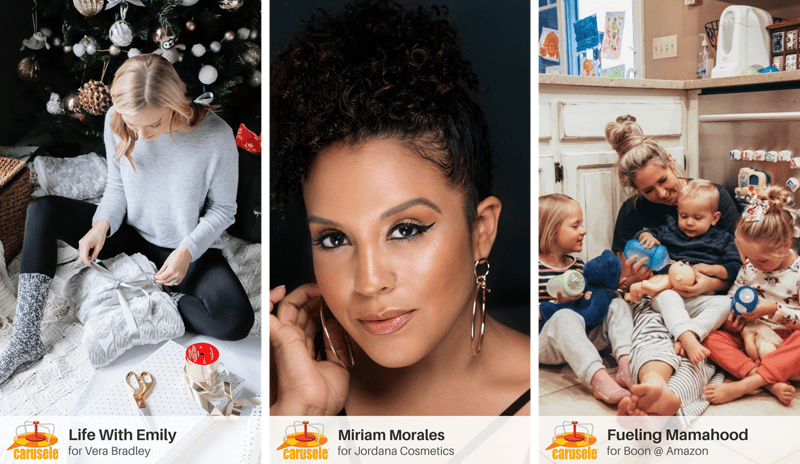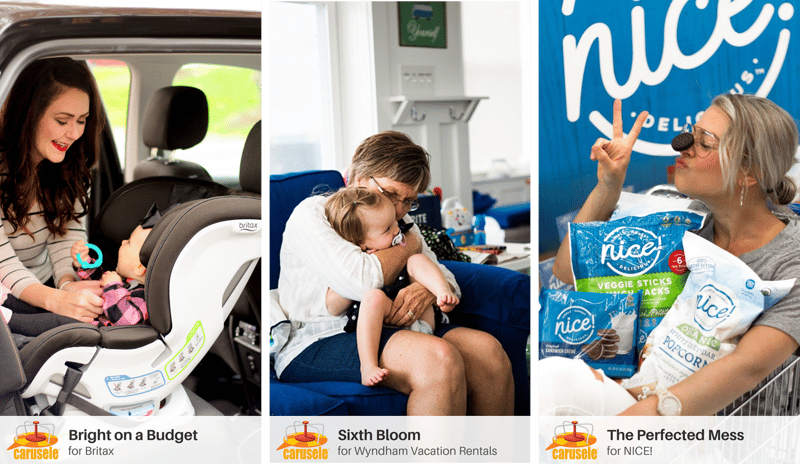Vetting Influencers for Marketing Programs isn't Easy
Whether you're manually digging through social media channels, using a tool, or partnering with an agency, identifying the right influencers to partner with for your upcoming campaign can be a daunting task. It's by far one of the most important components that will set you up for success, and can also set the entire campaign up for failure if done improperly.
Our team takes the time to carefully vet influencers before we partner with them on marketing campaigns for consumer brands and retailers. Through the vetting process we constantly find new items to add to our vetting checklist to ensure we're partnering with the best of the best. Below, we're breaking down the ultimate checklist you can use to vet influencers - starting with the basics and working our way down to the nitty-gritty little things that keep your brand safe.

Start With the ABCs
These three steps are perhaps the most important in the influencer vetting process, and help set the foundation (and the short-list) for what influencers you want to dive into.
- A - Audience Fit: What you don't want to do here is ask yourself "Does this influencer match my target audience?" but instead ask, "Does this influencers' audience match my target audience?" We see a lot of brands mistakenly pick influencers who align with their target and don't take the extra step to dig into the demographics and psychographics of the influencer's audience. With the help of third-party tools, you can see demographic data, location data, interest data and more. It's an investment that's definitely worth it.
- B - Brand Fit: Now that you know your audience lines up you can start to dig deeper into the actual influencer. We like to analyze their demographics, content themes, performance history and more to see if their values align with the brand's values. The key here is to ask "If I wasn't paying them to talk about my brand, is it something they might naturally talk about?" If the answer is yes, proceed.
- C - Content Fit: Now let's take a gander at the blog and/or social channels and evaluate what type of content the influencer is already producing. Our specialists personally look at the voice, tone, look and feel, history with competitors, and authenticity when evaluating this set of criteria.

Get More Technical
Next, we need to dive into some of the technicalities of the business and make sure influencers are adhering to standard industry guidelines.
- FTC Compliance: Let's get straight to the point here - the FTC has made it clear several times over the past few years that an influencer needs to clearly and conspicuously disclose any meaningful connection they have with a brand, otherwise they're misleading their audience. While the rules have not changed, we still see brands and influencers who aren't being compliant. To protect our clients, we look to ensure that the influencer has a history of using proper FTC disclosures so that we don't run into any issues along the way. >> Pro Tip: If you're unclear as to what the FTC guidelines state, download our cheat sheet to use as a hand dandy reference.
- Steer Clear from the Fakes: We're not talking fake accounts necessarily (which we advise you also stay away from, especially those virtual influencers) but more along the lines of influencers who are purchasing Followers, Likes, and Engagements. The uproar about fake followers started in early 2018, and while things have died down that doesn't mean influencers have stopped. Here's another post containing quick tips on how to identify this type of activity.

Protect Your Brand
Finally, its time to check the boxes that keep your brand safe, both short-term and long-term. Unfortunately, this is the area we see most brands slip-up when managing their own campaigns. Hopefully, this list helps you avoid being mentioned in the media along side one of the numerous influencer scandals that have occurred in the past year (think Jaclyn Hill, James Charles, Olivia Jade, and most recently Marissa Fuchs).
- Work History and Checking for Competitive Brands: While we took time earlier to dive into the influencers content types to see if it aligns with you brand, now's the time to dig deeper into their previous sponsored relationships. It's a good sign to see an influencer who's posted multiple times about a certain brand/product over the course of a few months or a year, showing that they must have a good relationship with that brand. It's also important to note who you consider a competitor, and if/when they may have worked with that company or organically posted about that brand. This doesn't mean you should 100% rule out the influencer, but make sure there's a clear period of time where they're not promoting the competitor, and then include your own non-compete requirement in your contract (which shouldn't be indefinite, unless you have an ambassador relationship).
- Saturation Rate: The above leads into this next point, that you should also be looking to see how frequently an influencer is posting sponsored content. If an influencer's entire feed is full of sponsored content, chances are they have less influence on their following. However, if the influencer is more selective about their partnerships and occasionally producing sponsored content that relates to their audience, they're more likely to produce valuable results.
- Reviewing All Content Types: While you might looking to hire an influencer for work on Instagram, you should still take the extra step to see what type of work they produce on all their channels, including those ephemeral pieces! Influencers have many faces for the different channels they run, and while their Instagram feed might look flawless, their Stories could tell a whole other... well, story. Make sure you're looking in all the right places.
- Reviewing Poshmark Pages: While Poshmark isn't a social channel, many influencers run accounts as another means to make money. The downside to this for a brand is making sure those free products you provided the influencer don't end up on those pages. Since our specialists follow all sorts of influencers on their personal channels, they frequently see creators publishing sponsored content, and then promoting that you can purchase that exact product from them off their Poshmark channel days later on Stories.
There you have it folks. As you can see, properly vetting an influencer can take hours of tedious work, especially if you have a limited internal staff working on your programs. But that doesn't mean you should cut corners. Once you have your short-list of influencers it's time to start the pitching process, which is another beasts in and of itself since you now have to determine what rate you're going to offer each influencer for the work you're asking them to complete.
If all this seems a bit more daunting than you realized, we're always happy to help. As I mentioned, we're doing this every day and would be happy to add your brand into the mix of partners who're proud to work with. Just fill out the form below and we'll get the conversation started.
-1.png?width=504&height=360&name=Carusele%20logo%20%C2%AE%20logo%20Color%20(2)-1.png)